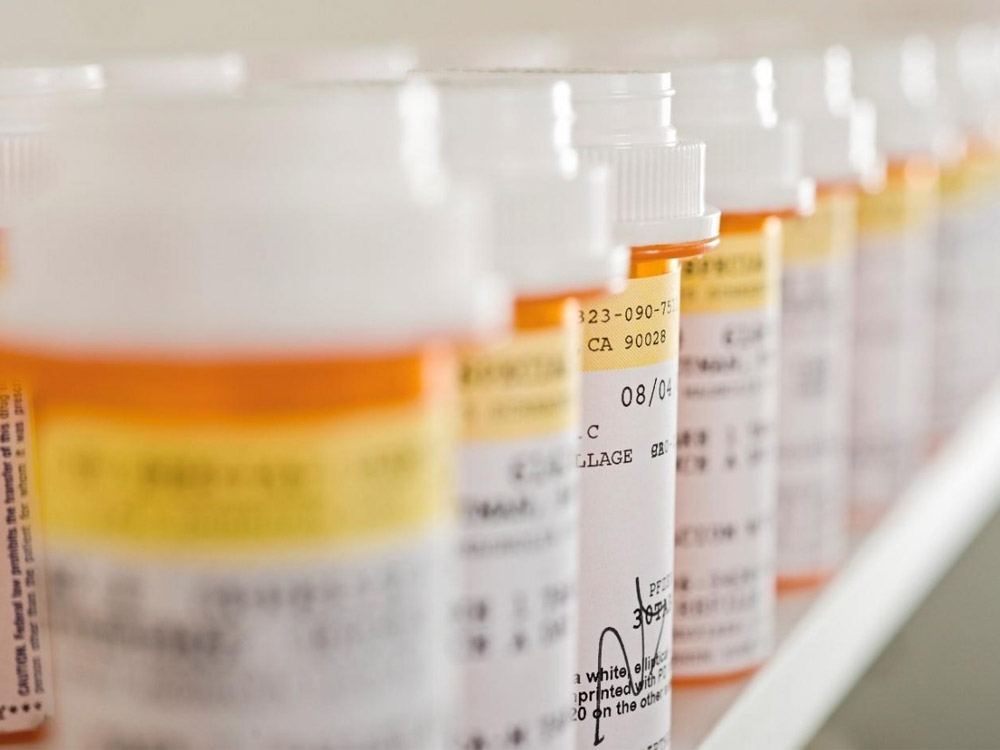To help improve quality scores and patient care, MVP is here to support you in closing gaps in care and avoid negative health outcomes, which can result in readmission, lower patient satisfaction, and increased costs to you and your patients.

|
Prescription Reminder: Enhancing Convenience for Patients
Published January 2026 Patients stabilized on chronic medications in the MVP Medicare formulary can receive a 90‑ or 100‑day extended supply, which offers added convenience, fewer pharmacy trips, and potential cost savings without requiring new authorization unless the dose or frequency changes. Read more. |

|
Set a Reminder, Never Miss a Dose
Published January 2026 Encouraging the use of mobile device reminders and apps helps patients consistently take their medications and improve health outcomes. Read more. |

|
HEDIS Annual Review
Published October 2025 The HEDIS Annual Review identifies areas for improvement in documentation and compliance related to specific HEDIS measures. Read more. |

|
Normalizing Chlamydia Screening
Published October 2025 Providers are advised on how to discuss chlamydia screening with teens and young adults to ensure they receive necessary information and care. Read More. |

|
From Awareness to Action
Published October 2025 October is ADHD Awareness Month, and Providers are given best practices for documenting ADHD to support timely diagnosis and effective treatment. Read more. |

|
MVP Insights Powered by Arcadia
Published July 2025 Beginning in July, MVP moved from the monthly Standard Reporting Packages (SRP) to MVP Insights Powered by Arcadia (MVP Insights). For further information, read on. |

|
Documentation of Juvenile Arthritis
Published July 2025 July is recognized as Juvenile Arthritis Awareness Month by the Arthritis Foundation. The goals are to increase awareness, inform families about the early signs and symptoms of Juvenile Arthritis (JA), and offer support for managing the disease. Read More. |

|
August is Immunization Awareness Month
Published July 2025 Some parents worry about vaccine side effects, but it’s important to note that in NYS and Vermont, certain vaccines are required for children to attend day care and pre-K–12th grade. Read more. |

|
Be Well Rewards—An MVP Well-Being Benefit for Medicare and Dual Special Needs Plan (D-SNP) Members
Published February 2025 Unlock the benefits of preventive care with Medicare's Annual Wellness Visit (AWV), designed to give providers a comprehensive view of your health and help detect diseases early. Complete your AWV and earn a $100 reward card through Be Well Rewards—learn more today! |

|
Medicare Annual Wellness Visits
Published April 2025 To ensure compliance and provide the best care for your patients, it's important to understand the key components and requirements of the Medicare Annual Wellness Visit. Read More. |

|
Colorectal Cancer: Screening Saves Lives
Published April 2025 Colorectal Cancer is the third most common cancer in the United States and the second leading cause of cancer death. Read More on how to educate your patients to the importance of regular screenings. |

|
Provider Guidance to Patients Taking Asthma Medications
Published April 2025 For patients who are living with persistent asthma proper use of controller medications may reduce the need for a rescue medication, as well as ER visits. Read More. |

|
Coordination of Care for ADHD
Published April 2025 For children with Attention Deficit Hyperactivity Disorder six years of age and older, the AAP recommends medication and behavior therapy together. Read More. |

|
Menopause Support for Your Patients
Published April 2025 Learn about Elektra, offering 1:1 care, support, and education to women experiencing menopause symptoms. |

|
Cervical Cancer Screening
Published January 2025 As January is Cervical Cancer screening month, MVP wants to share tips for Providers to raise awareness with your patients. |
|
|
Tips and Updates from the MVP HEDIS Operations Team
Published January 2025 Please review things to keep in mind as we begin the 2025 Gaps in Care measurement year. |
|
|
2025 Medicare Stars Measure
Published January 2025 Read how Providers and take advantage of electronic data streams to ensure the correct reporting of measures. |

|
2024–2025 Influenza (Flu) Season
Published October 2024 Please review tips for helping our Members to understand the importance of getting vaccinated for the flu this fall. Read More. |

|
October is Breast Cancer Awareness Month
Published October 2024 As Breast Cancer Awareness month is upon us, it is a perfect time to review best practices in coding and documentation. Read More. |

|
Prevent Diabetic Retinopathy
Published October 2024 Diabetic retinopathy (DR) is an important cause of visual morbidity and the leading cause of blindness among working-age American adults. Please review tips for how to discuss the importance of scheduling eye exams with patients with diabetes. Read More. |

|
Diabetes Screening for People With Schizophrenia or Bipolar Disorder Who Are Using Antipsychotic Medications (SSD)
Published July 2024 MVP’s Case Managers educate Members on the importance of taking care of their physical and behavioral health needs. Read More on how a collaborate effort can help treat patients with schizophrenia, schizoaffective disorder, or bipolar disorder. |

|
MVP HEDIS Operations: News and Updates |

|
Be Well Rewards – The New MVP Wellness Program for Medicare and Dual Special Needs Plan (D-SNP) Members |

|
Prescribing of Prolonged Opioid Medications |

|
HEDIS Operations Deadlines and Updates |
-
Published October 2023
As a Medicare Advantage Plan and an Affordable Care Act (ACA) Qualified Health Plan, MVP must meet standards for data submission and coding accuracy. To ensure we meet these standards our Chart Procurement Team is currently collecting Medicare records for 2022 and 2023 dates of service. This project will run through the end of December 2023. Additionally, the team is collecting records for the Initial Validation Auditor (IVA) Commercial Audit for 2022 dates of service. The IVA Commercial Audit will run through the end of October 2023. If MVP outreaches your office to request chart collections via fax, phone, or email, please ensure that the request is responded to promptly, as these are time-sensitive requests.
-
Published October 2023
MVP is committed to providing resources that help you and your patients close gaps in care to ensure good health. Here are some tips to help:
- Review your monthly Gaps in Care Reports: These monthly reports will help you quickly find which patients still need preventive care services. It may take a couple of months for Members to come off the report, therefore having a system in place that identifies Members that still need care from those who don’t will improve efficiency. If you have any questions, you can contact MVPGapClosures@mvphealthcare.com.
- Register your MVP Provider online account: Gaps in Care Reports are accessed in your MVP Provider online account. If you don’t already have an account, visit mvphealthcare.com/Providers and Register Now. If you find that you need technical support during the registration process, please contact MVP technical support at 1-888-656-5695 Monday–Friday 8:30 am–5 pm.
- Submit supplemental medical record data: Follow the instructions in the Gaps in Care Welcome Letter tab so that data goes to the right department for prompt processing.
-
Published October 2023
Granting MVP remote access to your electronic health records (EHR) allows MVP to help with closing your patients gaps in care and freeing up your staff’s valuable time to work with patients on other important health outcome needs. MVP nurses will be able to access required documentation for Annual HEDIS® medical record reviews, as well as number of other functions that will benefit your patients.
To learn more, visit mvphealthcare.com/Providers and select Resources, then Quality Programs, then Grant MVP remote access to EHRs.
-
Published October 2023
In 2021, the National Committee for Quality Assurance (NCQA) presented innovative ideas for increasing the use and standardization of electronic clinical data for HEDIS reporting. The NCQA felt the development of the HEDIS Electronic Clinical Data Systems (ECDS) would encourage improved health information exchange, with the secure sharing of patient medical information electronically. This bold strategy enables a digital quality system and aligns with the industry’s move to digital quality measures.
Starting in 2023, New York State and NCQA began implementing ECDS quality measures. This new category of measures will change how we collect information to close gaps in care. ECDS measures allow for four different data sources to contribute to measure performance:
- Administrative (claims submissions)
- EHR data feeds
- Registry data (i.e., HIXNY or HealthE Connections)
- Case management data
ECDS measures will no longer rely on supplemental data to close gaps in care. The first HEDIS measure that has transitioned to ECDS for measurement year 2023 is breast cancer screening (BCS). Please look out for upcoming communications from MVP on how we will be implementing these changes into our data collection for BCS.If you have any questions about data submission for ECDS quality measures, please contactyour MVP Professional Relations Representative.
-
Published October 2023
Health care providers are in a unique position to help prevent lead poisoning by identifying high risk children, testing blood lead levels, and referring to appropriate county resources when exposure is identified. The WHO Guideline for Clinical Management of Exposure to Lead recommends a blood lead concentration of five micrograms per decilitre (μg/dL) as a trigger for a thorough review of the ways in which a person is being exposed to lead and for action to reduce or end this exposure. To understand your counties resources, you can find the NYS County Public Health Department at health.ny.gov/environmental then select Lead Exposure & Lead Poisoning Prevention for information.
-
Published August 2023
New Study Unveils Childhood Vaccine Gaps
While as a country we’ve made excellent strides in reducing vaccine-preventable diseases through childhood immunizations, efforts are still needed to ensure that we maintain and improve vaccination coverage for our youngest Members.
A recent study published in PEDIATRICS® found that one in six toddlers have not completed the childhood 7-vaccine series. The study further revealed that:
- 1.1% of children were completely unvaccinated
- 9.9% had not initiated one or more of the combined 7-vaccine series
- 8.5% were one dose away from completing the combined 7-vaccine series
- Only 72.9% of toddlers completed the combined 7-vaccine series
Furthermore, recent CDC findings show that 93% of kindergarten-age children had received the recommended vaccines during the 2021–22 school year. This is lower than both the 2020–21 school year (94%) and the 2019–20 school year (95%).
August means back to school prep for many parents, and your office may start to see an increase in well-child visits as well, especially for younger children with school-age siblings. This is a perfect opportunity to make sure their immunizations are up to date.
Primary care providers play a crucial role in immunizing children. For tips and best practices to help meet these key goals, download the MVP Childhood Immunization Schedule HEDIS provider reference guides. Visit the MVP Provider Reference Library: HEDIS Guides for additional resources. -
Published July 2023
Improving Rates of Preventive Dental Care for MMC Adult Members Ages 21-64 Years
Program Overview
Low-income adults suffer a disproportionate share of dental disease and are nearly 40% less likely to have a dental visit in the past 12 months, compared to those with higher incomes. Poor oral health can increase risks for chronic conditions such as diabetes, heart disease, and tooth decay—currently the most common chronic disease in the US. The NYS Department of Health (NYSDOH) recognizes the importance of annual dental visits and good oral health for the Medicaid Managed Care (MMC) population. The current NYS PIP, Improving Rates of Preventive Dental Care for MMC Adult Members Ages 21-64 Years, aims to help improve preventive dental care rates among this population, by focusing on three areas:
- Annual dental visits (ADV)
- Emergency department visits for non-traumatic dental conditions (NTDC-ED)
- Social determinants of health (SDOH)
To align with the goals of the NYS PIP, MVP has partnered with Healthplex, facilities, and providers to increase ADVs, reduce NTDC-ED, identify and address SDOH affecting preventive dental care, and improve Member experience and access to appropriate care.
Based on partial 2022 data, MVP Members have made significant progress reducing NTDC-ED, but more work needs to be done to promote ADVs among the MMC population as ADVs are still experiencing a downward trend.
To help better understand some of the SDOH barriers keeping Members from having routine dental care, MVP conducted a survey among Medicaid Members ages 21-64 in the Northeast region. Among those who have not received dental care in the last 12 months, many (59%) noted the COVID-19 pandemic had at least some impact on their dental care. Barriers such as finding childcare, or transportation were mentioned less frequently. Now that the COVID-19 public health emergency has ended, there is an opportunity to help Members get back on track with their routine dental care.
Dental Care is Primary Care
Primary care teams can help Members understand the importance of oral health in the context of their overall health and reinforce the importance of annual dental visits and preventive care. Additionally, PCPs and their teams can leverage their skills, resources, and tools to intervene in the oral disease process by:
- Asking about the Member’s oral health, risk factors, and symptoms of oral disease
- Looking for signs that indicate oral health risk or active oral disease
- Identifying SDOH or local/regional barriers to dental care
- Deciding on the most appropriate response
- Offering preventive interventions, referral for treatment, and/or self-care practices
-
Published July 2023
August is Immunization Awareness Month, and a time when parents get their children ready to go back to school.
Some parents may have concerns that vaccines have harmful side effects. As you educate and discuss immunization needs with the parents/child it’s important to remind them that in NYS and Vermont, certain vaccines are mandatory for acceptance into day care, and pre-K—12th grade.
Parents must show proof of a child’s up to date immunizations within 14 days of the first day of school or day care. The only exemption from vaccinations in NYS is a valid medical exemption. To obtain a valid medical exemption in NYS, the NYSDOH Bureau of Immunization/Division of Epidemiology requires the ‘Immunization Requirements for School Attendance Medical Exemption Statement for Children 0-18 Years of Age’ form. (This form is number DOH-5077 and can be found at health.ny.gov/forms/doh-5077.pdf). A NYS licensed physician must complete the medical exemption statement.
In Vermont, exemptions from vaccination requirements are allowed for religious or medical reasons. The medical immunization exempt form is available by visiting healthvermont.gov/disease-control and selecting Immunizations, then Immunization Information for Child Care and School Providers. The form must be completed by the child’s health care Provider.
School-Age Vaccine Check List
Age Group
Vaccines Required
< Four
- Haemophilus influenzae type b conjugate (HiB)
- Hepatitis B
- Pneumococcal
Four to Six
- Diphtheria, tetanus, and pertussis (DTaP)
- Measles, mumps, rubella (MMR)
- Polio
- Varicella (Chickenpox)
11-12
- Meningococcal disease (MCV4)
- Tetanus, diphtheria, and pertussis (Tdap)
13-18
- MCV4 booster
Recommended for Children and Adolescents:- Human papillomavirus (HPV)-Initial dose of the HPV vaccine after they turn nine years old
- Flu - Children (over six months old) should get their flu shot each year
- COVID-19 - The CDC recommends children (over six months old) get their primary series of COVID-19 vaccines and receive a booster dose when eligible
Source sites:
- healthvermont.gov/disease-control/immunization/immunization-information-child-care-and-school-providers
- health.ny.gov/prevention/immunization/schools/school_vaccines
-
Published July 2023
Each summer, MVP mails an Asthma Action Plan to school age kids in a Medicaid (NY) or Commercial (NY, VT) plan. Members are encouraged to complete the action plan, keep a copy for themselves, and share copies with their doctor and with their school. Our goal is to educate Members on the importance of completing an asthma action plan, while ensuring school staff understand how they can help our young Members in the event of an asthma attack.
Your patients living with asthma may have questions or ask for input in completing their action plan. As always, we appreciate your support and guidance of our Members.
-
Published July 2023
September is Suicide Prevention Month—a time to raise awareness about this often-stigmatized topic.Suicidal thoughts, much like mental health conditions, can affect anyone regardless of age, gender, or background. Incidentally, suicide is often the result of an untreated mental health condition.
Follow-up care supports the transition of individuals who are in suicidal crisis as they continue their journey toward recovery. Research shows that 43% of suicides occur within a month of discharge from a hospital and that 47% of those individuals died before their first follow-up appointment.But follow-up care can be an impactful method of suicide prevention. To learn more visitfollowupmatters.988lifeline.org.
For more tips and best practices on follow-up care after an ED visit for your patients visit mvphealthcare.com/providers/communications-center and select Closing Gaps in Care, and then Tips for Providers (FUA, FUM).
MVP also provides telephonic case management with licensed behavioral health clinicians who can help link customers with in-network outpatient therapists, assist with access to other social service needs, provide information about other supportive resources, and much more. If you have a patient that would like access to our Case Management program, call MVP at 1-866-942-7966. Or visit mvphealthcare.com/behavioralhealth to learn more.
-
Published April 2023
No one knows better than you that for patients who are living with persistent asthma, proper medication management includes the use of controller medications. In fact, the proper use of controller medications may reduce the need for a rescue medication, as well as ER visits, inpatient admissions, and days of school or work missed.Ensuring optimal asthma management can be challenging at times, and MVP is here as a partner to support you in providing this high-quality care.
Best Practices for Patients with Asthma
- Prescribe a controller medication for patients who do not have one. View the Formulary for a list of covered controllers by visiting mvphealthcare.com/providers and selecting Pharmacy
- Check the patient’s ratio of controller to rescue medication; ensure that for every two controller prescriptions your patient has filled at a pharmacy, they have only one rescue inhaler prescription filled
- Help your patient understand the benefit of using a controller medication regularly rather than only using a rescue medication to manage their asthma
- Instruct your patient on proper inhaler and spacer use (if appropriate)
- Encourage patients to carefully review their asthma newsletter, Breathing Easier, mailed biannually by MVP
- Work with your patient on their Asthma Action Plan so they understand their triggers and what to do during an asthma attack. Copies of the plan go to the patient, school, and with you for your records. Patients can request an Asthma Action Plan by contacting MVP Case Management at
1-866-942-7966
-
Published April 2023
Coding guides are available for select Adult Behavioral Health Care, Adult Preventive Care and Medical Conditions, Child and Adolescent Care (Physical and Behavioral Health), Diabetes Management, and Women’s Preventive Care quality measures. Visit mvphealthcare.com/providers, select Reference Library, and then select 2023 Provider Coding Reference Guides for HEDIS Measures.
-
Published April 2023
The State of Mental Health in America
- 46% of Americans will meet the criteria for a diagnosable mental health condition sometime in their life, and half of those people will develop conditions by the age of 14
- 56% of US adults living with a mental health illness (27 million) have not received any mental health treatment
- 60% of adolescents living with depression (2.17 million) have not received any mental health treatment
Source: Quick Facts and Statistics About Mental Health | Mental Health America (mhanational.org)
Mental (or behavioral) health is just as important as physical health, as it can drastically affect quality of life when imbalanced. MVP understands the increasing demands on Providers when it comes to meeting both the physical and behavioral health needs for your patients. To help ensure your patients receive the care they need, MVP offers several telehealth options for Members to access virtual behavioral health support including:
Telehealth option
Website
myVisitNow
Brave Health
Array Behavioral Care
Apti Health
Valera Health
MVP also provides telephonic case management with licensed behavioral health clinicians who can help link customers with in-network outpatient therapists, assist with access to other social service needs, provide information about other supportive resources, and much more. If you have a patient that would like access to our Case Management program, Providers, the Member, or a designee can call MVP at 1-866-942-7966. Or visit mvphealthcare.com/behavioralhealth to learn more.
-
Published April 2023
Timely follow-up care after your patient has been discharged from the hospital or emergency department (ED) for a behavioral health (BH) event helps improve physical and mental function, increases compliance with follow-up instructions, reduces avoidable readmissions, and overall, improves health outcomes. Research also suggests that close follow-up care for people living with a behavioral health condition after a BH event:
- Reduces incidents of suicidal ideation, suicide attempts, and completed suicide
- Reduces substance abuse and improves entry into recovery
- Reduces ED use and hospital admissions
- Leads to better identification and treatment of behavioral and physical health issues
Not a behavioral health Provider? While your patient’s follow-up care requires a visit with a BH provider (psychiatrist, psychologist, clinical social worker, or other therapist), as their PCP, there are strategies your practice can implement to establish continuity of care:
- If the hospital discharge planner calls your practice to schedule a follow up visit, and the hospitalization was for a BH event, coordinate with the discharge planner to make the appointment with the Member’s BH provider
- If the Member calls your practice after discharge from a hospital or ED for a BH event, implement office procedures to assist them to schedule a follow up visit with their BH provider
- If the Member does not have a BH provider, refer them to mvphealthcare.com/FindaDoctor and use the Doctors by Specialty or Places by Type search options
- Develop a referral relationship with mental health and substance use disorder Providers close to your office
Follow-Up After Hospitalization for Mental Illness (FUH) measures the rate of Members six years of age and older who are discharged after an acute in-patient hospitalization for treatment of selected mental illness or intentional self-harm diagnoses and had a follow up visit with a BH provider within seven days or 30 days following that hospital
Follow-Up After ED Visit for Substance Use (FUA measures the rate of Members 13 years of age and older who are discharged after an ED visit with a principal diagnosis of substance use disorder (SUD), or any diagnosis of drug overdose and had a follow up visit with a BH provider within seven days or 30 days following that
For additional information on improving your quality performance and closing gaps in care for FUH and FUA, visit mvphealthcare.com/providers, select Reference Library, and then 2023 Provider Coding Guides.
-
Published April 2023
NEW Measure Highlight: Developmental Screening in the First Three Years of Life
In 2022, NYS introduced a new QARR measure: Developmental Screening in the First Three Years of Life (DEV-N) which was adapted by NYSDOH, with permission, from the “Developmental Screening in the First Three Years of Life” measure stewarded by Orgon Health and Sciences University.
DEV-N looks at the percentage of children screened for risk of developmental, behavioral, and social delays using a standardized screening tool in the 12 months preceding or on their first, second, or third birthday.
Important things to note:
- Developmental screening as described here requires a global (multi-domain) screen and not a single-domain screen, like autism
- Screening tools must include the developmental domains for motor, language, cognitive, and social-emotional development
- Tools must have established reliability scores of approximately 0.70 or above
- Claims data requires the use of CPT code 96110 orICD-10-CM code Z13.42
- Do not include modifiers added to claims indicating standardized screening for a specific domain of development—DEV-N is anchored to recommendations focused on global development screening using tools that focus on identifying risk for developmental, behavioral, and social delays
Documentation standards in the medical record:
- A note indicating the date on which the test was performed
- The name of the standardized tool used
- Evidence of a screening result or screening score
For a list of standardized tools that meet criteria cited by Bright Futures and the American Academy of Pediatrics statement on developmental screening, visit aap.org/brightfutures and select Practice Management, then Materials and Tools, and then Bright Futures Tool and Resource Kit, second edition.
-
Published April 2023
The HEDIS quality measure for Osteoporosis Management in Women Who Had a Fracture (OMW) looks at the percentage of women 67-85 years of age who suffered a fracture and who had either a BMD test or prescription for a drug to treat osteoporosis in the six months after the fracture. The current measurement year for OMW (July 1, 2022-June 30, 2023) will soon end. The time for closing these gaps in care is now.
View the OMW Coding Guide at mvphealthcare.com/providers. Select Reference Library then 2023 Provider Coding Guides for HEDIS Measures.
Expanding Osteoporosis Testing
You may consider expanding evaluation to individuals who have health and physical risk factors that could pre-dispose them to developing osteoporosis, including:
- An autoimmune disorder (rheumatoid arthritis, lupus, multiple sclerosis)
- An endocrine or hormonal disorder (hyperparathyroidism, Cushing’s syndrome, hyperthyroidism, low testosterone)
- A digestive disorder (inflammatory bowel disease, poor absorption)
- HIV/AIDS
- COPD
- History of transplant
- Family history of osteoporosis
- Risk factors such as poor diet, loss of weight, smoking, increased alcohol consumption, etc.
-
Published April 2023
As Spring arrives, MVP’s HEDIS Operations team will close out the annual HEDIS Review to make way for the 2023 Gaps In Care (GIC) Program.
Provider practices can resume sending GIC documentation to mvpgapclosures@mvphealthcare.comafter May 1, 2023.
Please be sure to use the publication of the March 2023 GIC report to allow for Q1 claims to process. For information on how to access your practice’s monthly GIC report, visit mvphealthcare.com/providers, select Reference Library, then HEDIS Measures and Gaps in Care Resources.
Please follow the guidelines below to help streamline our GIC program and process submissions most efficiently:
- Use one dedicated cover sheet for each date of submission, completed in its entirety. The cover sheet can be found in a separate tab accompanying the GIC reports. It’s important for the review team to have an office contact for follow-up so our team can communicate with you if further documentation is needed
- Attach individual patient records to your transmission as opposed to sending batch files that are not separated per Member. This improves processing time for your submissions
- Make sure the patient name on all documents matches the name shown on the GIC report. If the name on a report differs, submit the Member’s demographic sheet showing the former name (i.e., change in marital status). HIXNY demographic information also shows all aliases for Members who are enrolled. Please submit that document if necessary
- Follow all measure specifications shown in the GIC Cover sheet tab as a guide to required documentation and specific timeframes for each measure
- Maintain a tracking mechanism to avoid duplicate submissions. Allow 60 days for a patient’s “required” service to show a “pass” for that measure on the report. Do not re-submit the same documentation before two more GIC reports have been published
- Do not submit documentation for members who don’t appear on the GIC report. We will not be able to process it
- Be sure to use the most recent GIC report for all submissions to ensure the gap has not already been closed with a claim
MVP HEDIS Operations Team thanks you in advance for your attention to these guidelines. Submit questions about our GIC process to mvpgapclosures@mvphealthcare.com.
-
Published January 2023
A New HEDIS Hybrid Measure
Eligibility Criteria:
- Members who are enrolled in MVP DualAccess (HMO-DSNP), a new plan offering in 2022 for dual-eligible individuals (Medicare/Medicaid)
- Members must be 66 years of age or older in 2022 and had each of the following services completed during the measurement year:
- Medication Review documented by a clinical pharmacist or prescribing provider in 2022. The review must occur in an outpatient setting or non-acute facility and may include telephone encounters or telehealth visits. The Member does not need to be present for a medication review. A current medication list must be filed in the medical record.NOTE: Members who received Transitional Care Management Services in 2022 are also compliant for this sub-measure.
- Functional Status Assessment performed in an outpatient setting or non-acute facility and may include telephone encounters or telehealth visits. All components must be documented in 2022 but may take place during separate visits. Functional Status Assessment components include:
- Documentation of a complete functional status assessment that includes the ability to perform activities of daily living (ADLs) and instrumental ADLs (IADLs); or
- Completion of a Functional Status Assessment Tool filed in the medical record.
- Pain Assessment performed in an outpatient setting or non-acute facility and may include telephone encounters or telehealth visits. At a minimum, documentation must show that:
- The patient was assessed for pain; or
- A standardized pain assessment tool was completed.
MVP publishes various tools and resources to help support Participating Providers close gaps in care for COA and other HEDIS measures. Visit mvphealthcare.com/Providers, select Reference Library, and then select HEDIS Measures and Gaps in Care Resources.
-
Published January 2023
The annual HEDIS medical record collection project will begin the first quarter of 2023. MVP is contracting again with Inovalon to conduct record collection on behalf of MVP. Reminder letters will be sent out to Participating Providers.
We understand this is a highly intensive process that requires a lot of your staff’s time. To help reduce the burden, consider granting MVP access to your electronic health record (EHR). This will allow MVP to collect the information needed instead of utilization of your valuable staffing resources. For further information or if you would like to grant MVP EHR access, please contact Melissa Alter at melkelly@mvphealthcare.com. As always, we appreciate your partnership. -
Published January 2023
As a Medicare Advantage Plan and an ACA Qualified Health Plan, MVP must meet standards for data submission and coding accuracy. The MVP Risk Adjustment team conducts annual reviews of Member records to meet these standards, and throughout the year we will randomly request to collect EHR or paper charts, depending on your system’s capabilities. The purpose is to verify that serious or chronic medical conditions are being reported with the right diagnosis as well as being coded to the highest level of specificity for those diagnoses.
Starting at the end of December 2022 through April 2023, MVP will collect records for services performed in 2022 for the Commercial Chart Review Project. We will follow that with the Medicaid Chart Review beginning February 2023 through July 2023. Lastly, the Medicare Chart Review will run April 2023 through December 2023. For any questions, please contact Anselmo Nieves at anieves@mvphealthcare.com.
-
Published January 2023
Adherence to statin medications can aid in risk reduction of clinical atherosclerotic cardiovascular disease (ASCVD) for patients living with cardiovascular disease (CVD) and/or diabetes. As such, the National Committee for Quality Assurance (NCQA) has two unique statin therapy measures.
Statin Therapy for Patients with Cardiovascular Disease (SPC) assesses males 21-75 years of age and females 40-75 years of age during the measurement year, who are identified as having ASCVD and meet the following criteria:
- Received at least one high or moderate intensity statin medication during the measurement year.
- Had adherence to the statin medication regimen for at least 80% of the treatment period.
Statin Therapy for Patients with Diabetes (SPD) assesses individuals 40-75 years of age with a diagnosis of diabetes and no diagnosis of ASCVD, and who meet the following criteria:
- Members who have received at least one statin medication of any intensity during the measurement year and
- Had adherence to the statin medication regimen for at least 80% of the treatment period.
As a point of reference, the American Diabetes Association recommends that individuals living with diabetes and a history of CVD, as well as those older than 40 years of age without CVD but with CVD risk factors, should be treated with a statin regardless of their baseline LDL cholesterol concentration.
When prescribing statins to Patients living with cardiovascular disease or diabetes, please ensure the medication is included in the MVP Formulary. To review the following a table for High, Moderate, and Low-intensity statin medications that will best suit your Patient, see the table below.
High-Intensity Statin Therapy
- Atorvastatin 40-80 mg
- Amlodipine-atorvastatin 40-80 mg
- Rosuvastatin 20-40 mg
- Simvastatin 80 mg
- Ezetimibe-simvastatin 80 mg
Moderate-Intensity Statin Therapy
- Atorvastatin 10-20 mg
- Amlodipine-atorvastatin 10-20 mg
- Rosuvastatin 50-10 mg
- Simvastatin 20-40 mg
- Ezetimibe-simvastatin 20-40 mg
- Pravastatin 40-80 mg
- Lovastatin 40 mg
- Fluvastatin 40-80 mg
- Pitavastatin 1-4 mg
Low-Intensity Statin Therapy
- Ezetimibe-simvastatin 10 mg
- Fluvastatin 20 mg
- Lovastatin 10-20 mg
- Pravastatin 10-20 mg
- Simvastatin 5-10 mg
-
Published January 2023
Off-cycle HEDIS measures do not follow the January-December measurement year (MY) like other HEDIS measures. Here is what you need to know to help close gaps in care for off-cycle measures:
Measure Name Timeline What Needs to Be Done How Can I Get This Done Last Date of Service for MY 2022 Follow-Up Care for Children Prescribed ADHD Medications (ADD) Start Date: March 1 of the year prior to the MY
End Date: February 28 or February 29 (leap year) of the MYMembers 6-12 years of age prescribed ADHD medications need a provider visit with prescribing authority in first 30 days of new prescription being dispensed and then follow-up with two additional visits over the next nine months as well as the member staying adherent to their medication for at least 210 days in the measurement period. Either by in-person or telehealth visits, if the practitioner has prescribing authority in case medication dosages need adjustments. February 28, 2023.
(Note: March 1, 2023, starts the new measurement period for ADD.)Osteoporosis Management in Women Who had a Fracture (OMW) Start Date: July 1 of the year prior to the MY
End Date: June 30 of the MYWomen 67-85 years of age who suffered a fracture and had either a bone mineral density (BMD) test or prescribed medication to treat osteoporosis. REMEMBER you only have six months from the fracture date to do a BMD or start medications. Be aware of females at risk; do BMD testing and educate your members on safety factors, etc. Members are excluded from measure who have had a BMD testing within 24 months of the episode date. June 30, 2023, for new fractures, but you have six months to do the BMD test and/or medication prescribing if not already done.
Watch your coding; “new fracture” coding should be updated once it’s no longer considered a new fracture.Use of Spirometry Testing in the Assessment and Diagnosis of COPD (SPR) Start Date: July 1 of the year prior to the MY
End Date: June 30 of the MYMembers 40 years of age and older with a NEW diagnosis of COPD or a NEWLY ACTIVE (has been symptom free for two years prior) COPD who received spirometry testing to confirm diagnosis. Spirometry testing to confirm a COPD diagnosis. June 30 for diagnosing; treatment must be completed within six months of diagnosing.
e.g.: A member diagnosed with COPD on June 30 has 180 days (or until December 27) to have Spirometry testing.Prenatal and Postpartum Care (PPC) Start Date: October 8 of the year prior to the MY
End Date: October 7 of the MYPrenatal looks at the timeliness of care.
Postpartum looks at postpartum visits after delivery.
This measure assesses that the delivered live birth has had at least one:
*Visit in the first trimester and
*Visit between seven and 84 days after deliveryPrenatal and Postpartum care visits are to be with an OB/GYN or other prenatal care practitioner or PCP. (For a visit to a PCP, a diagnosis of pregnancy must be present.) Remember: for visits to count, documentation in the medical record must show the date when the prenatal/postpartum care visit occurred and evidence of the care and/or examination during the visit that pertains to either the prenatal or postpartum time period. Prenatal and postpartum care are necessary for the health and well-being of the mother and the fetus. Make every attempt to have the mom seen regularly during the prenatal period, and between 7-84 days after the delivery. If you are having difficulty getting mom into the office, the MVP Case Management team can assist with member outreach.
Review MVP Quality Programs
Provider Communications Center
Get up-to-date information and important updates from MVP.

